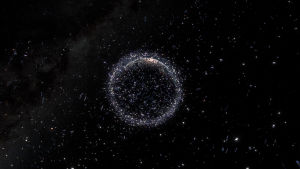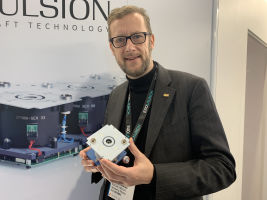Space Debris

At the beginning of December, I took a short ferry trip to Helsinki to visit European Space Week. One of the emerging trends that were covered at the conference was the Sustainability in Space. (Yes, we managed to screw things up not only on Earth.) The problem is so huge that it became a serious threat to the future of the whole Space industry.
Currently, there are more than 18,000 pieces of debris with a size of more than 10 centimetres flying in low earth orbit. Ten centimetres is the size of an object that can be detected and tracked from the earth. The thing is, any object bigger than 1 centimetre is already lethal for a spacecraft.
© ESA/ID&Sense/ONiRiXEL, CC BY-SA 3.0 IGO
Not-so-fun fact: there were a few collisions in Space that almost doubled the amount of debris. Take the Chinese ASAT test in 2007. An old meteorological satellite has been intercepted with a non-explosive missile; They did it just to see what will happen. You know, just to practice some sort of Star Wars scenario, only in real-life. The result was +3500 new pieces of debris.
When these objects collide at such enormous speeds, they generate a new batch of particles. This avalanche effect got the name "Kessler Syndrome". That was after Donald Kessler published an article in 1978 where he proposed the possibility of such an event.
This is how Thomas Povey describes the current situation in his book, "Professor Povey's Perplexing Problems".
I, for one, would feel rather uncomfortable sitting in the International Space Station knowing that there were about 20,000 objects larger than 5 cm in size, and over 300,000 objects smaller than 1 cm, orbiting the Earth at relative velocities of tens of thousands of kilometres per hour.
Feel the scale of the problem?
The low earth orbit is packed with space debris that makes a launch harder. At the same time, the demand is only growing.
Take OneWeb as an example – this company alone is planning to deploy 600 new telecom satellites in the next couple of years. To their honour, OneWeb has a dedicated section on its website called Responsible Space.
Here's the main message from the EUSW.
If we continue utilizing Space like we were doing until now, we may lose it for tens or hundreds of years.
Imagine the world with no telecom and navigation, no weather forecasts and no Earth Observation. Definitely, no missions to Mars...
To stop the growth of space debris, new regulations need to be proposed by the European Union. Space agencies and private companies develop new solutions for the next generation of satellites. Still, there isn’t any feasible technology to clean the orbit from junk that is already there.
One can foresee the era of Space Janitor startups. 🛰🧹
P.S. If you want to go a bit deeper into this subject, I very recommend watching the Kessler Syndrome movie by Asher Isbrucker (~14 minutes).

